Adris Kamuli: The MadMan Who Made Maad a Creative Powerhouse
From creating culturally resonant work for top-tier clients such as MultiChoice (DStv, GOtv), Coca-Cola, UBL , Emirates, Uganda Baati, Ugachick, Pride Bank, Mastercard, Unicef, UNCD and flagship initiatives like the Rotary Cancer Run and Run for the Nile, Maad has consistently positioned itself as a pacesetter of creativity and professionalism.
The agency’s commitment to brave ideas and world-class storytelling has earned it regional recognition, sweeping industry awards that validate its status as a leading light in East Africa’s advertising space. Yet for Adris, the real legacy goes beyond trophies—it lies in mentoring Uganda’s next generation of creative leaders, professionalising agency practice, and helping build a creative economy that can stand shoulder to shoulder with the best on the continent.
As part of our special editorial feature, “MadMen of Uganda: The Visionaries Who Shaped Uganda’s Advertising Industry,” we sat down with Adris to reflect on his journey, leadership philosophy, lessons from building Maad McCann, and his thoughts on the future of advertising in Uganda.
Let’s take it back to the very beginning. Growing up, advertising was never really part of the conversations we had—I, for instance, once thought I’d become a priest. For you, how did it all begin? What was your first encounter with advertising, and how did you eventually find your way into the industry?
It’s quite an interesting journey. My first degree was in Fine Art —what was then called the Bachelor of Industrial and Fine Arts at Makerere University. While most of my classmates wanted to go into teaching and pursue the Post Graduate Diploma in Education (PGDE), I knew that wasn’t for me. My passion was in graphic design, so I chose that path instead.
After university, I met a gentleman named Wamala Fred, who sadly passed away during the COVID-19 pandemic. He introduced me to computer graphics and encouraged me to deepen my skills. I enrolled at a small school on Kimathi Avenue in the late 1990s, where I trained on software like Corel Draw, QuarkXPress, and Adobe PageMaker. That training gave me a new edge, and soon after, I landed my first job at Graphic Systems, which was just starting out at the time.
By 1999, I was poached by TBWA/Adapt—which later became QG Saatchi & Saatchi. They offered a very competitive pay, and I found myself working on exciting accounts like MTN in its early days. That’s when I discovered that advertising wasn’t just about design—it was about coming up with ideas for radio, TV, outdoor, and more. It connected directly with my passion, and I knew I had found my calling.
I spent four years at QG Saatchi & Saatchi, and during that time, I realised I wanted to be the best in this industry. I searched for advertising schools across Africa, Europe, and North America. Surprisingly, there were none in Africa or even most of Europe that fit my vision. Eventually, I discovered the Miami Ad School in the U.S., which had the exact kind of training I wanted.
Getting there wasn’t easy—I was denied a visa two times, but on the third attempt, I succeeded. I was determined, because I wasn’t going to America to chase opportunity; I was going to study and change the world. Life in the U.S. was tough, but I completed my postgraduate studies and returned to Uganda around 2006.
Before launching Maad, I worked briefly in Rwanda with Creative Communications, an ad agency for a very good friend of mine, J.P Sebageni. That experience gave me a platform to apply what I’d learned abroad. By 2008, after about a year and a half back in the region, together with my colleagues, we launched Maad Advertising. That’s really where the story begins—with passion, resilience, and the belief that we could build something different in Uganda’s advertising industry.
This whole issue of poaching—whether it’s clients poaching agency staff, agencies poaching from suppliers, or even suppliers cross-poaching talent—clearly didn’t start today. Back when you were at Graphic Systems, I imagine the very people who eventually poached you must have been the same ones handling MTN’s work at the time. Was that the case?
It was actually the bosses —Patrick Quarcoo and David Galukande, the co-founders of QG Saatchi & Saatchi—who personally brought me on board. At the time, David Galukande was the Creative Director and JP Sebageni was the Art Director. They already had all the big accounts—MTN, Stanbic, and several others. So yes, that’s how I made the transition.
It seems Adapt TBWA was really the place to be back then—I remember seeing you guys in the newspapers all the time. What was life in the agency like during those days, and how does it compare to today? Was it really as glamorous as it looked from the outside?
It was very glamorous and prestigious working at Adapt-TBWA , which later became QG Saatchi & Saatchi. The fact that we were handling MTN at a time when advertising was just blossoming in the Ugandan market made it even more exciting.
The people we worked with also added to that sense of prestige. Patrick Quarcoo, for instance, liked recruiting talent who had studied abroad, especially in Europe and North America. So the team included about 8 people from elite schools—places like St. Andrews Turi—who had gone overseas for further studies before returning to Uganda. In a way, we were working alongside the children of the country’s high and mighty, which gave the agency an added aura of exclusivity.
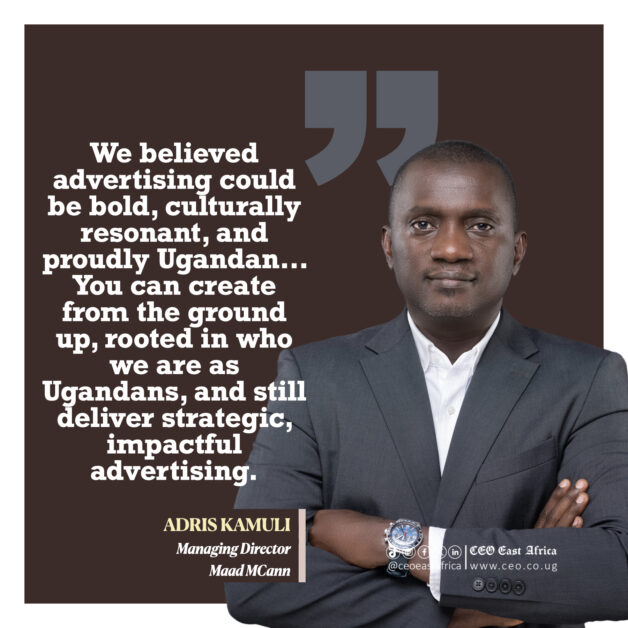
And was it just glamorous on the surface, or did it also reflect in your pockets—was the money, the pay, as glamorous?
The money was good too—I can tell you, they paid us very well. The retainers were solid, and for young people like us at the time, it was both exciting and rewarding. That financial security, combined with the prestige of the work, is actually what endeared me to advertising and convinced me to stay in the industry.
Alright, let’s talk about the founding of Maad Advertising. How did this whole ‘Maadness’ actually begin? What was the vision behind starting the agency?
Yes, Maadness indeed. What is now Maad McCann actually began as Maad Advertising. For the first seven years, that was our name. The agency was incorporated in 2007 and officially opened its doors in January 2008.
We were four co-founders—Michael Kafeero, Annette Sebba, Daniel Ligyalingi, and myself—and we had all worked together at QG Saatchi & Saatchi. That shared experience gave us the confidence to try something of our own. The truth is, we started with little more than a vision, a few personal laptops, and a strong belief that we could make a mark in Uganda’s advertising industry.
What we did have in abundance was passion, talent, and determination to do things differently. Seven years later, in 2015, we took a bold step and joined the McCann Worldgroup network. That strategic move gave us a global footprint while allowing us to maintain our local identity. It marked our evolution into Maad McCann—a global agency with world-class standards, but deeply rooted in Uganda.
Alright, so once you had opened your doors, how long did it take you to land your very first serious client? I know some agencies incorporate when they already have a client lined up—was that the case for you, or did it take a while before you secured your first big account?
It actually took us five months to land our first serious client. When we opened our doors on the 2nd of January 2008, we didn’t have much—just a few pieces of furniture and six months’ rent prepaid to the landlord. We began by doing work for companies and organizations like; Plan for Modernising Agriculture (PMP)m NBS TV, and Blue Cube—this was even before NBS came under its current management. We pitched here in Uganda and even in Rwanda, but for a while, nothing concrete was coming through.
Those early days were tough. Sometimes we struggled to raise even enough money for fuel. What we did have, though, was passion and a portfolio—much of it drawn from my academic work and projects I had brought back from the U.S. We used those pieces to build our credentials and started knocking on doors.
The breakthrough came around April or May 2008, when we were invited to pitch for Warid Telecom. At the time, we were still a very unknown agency, and pitching for Warid felt like punching above our weight. We were just six people—four founders, a receptionist, and a temporary office assistant. But we believed in ourselves, gave everything to that pitch, and thankfully, the client took a chance on us.
Winning Warid wasn’t just our first big account; it was proof that belief, hustle, and bold thinking can open doors—no matter how small you are. In those days, we all wore multiple hats. I was the Creative Director, but I also designed, did art direction, and even copywriting alongside Anne Sseba. My partners jumped into strategy, media planning, client servicing, production, finance, and admin—whatever was needed, we did it ourselves. That was the spirit that carried us through.
During those first six months before you landed Warid, it must have felt like being in the wilderness—almost like the Israelites leaving Egypt and wondering if they were better off back there. Was there ever a point when you and your co-founders started questioning the vision, or even blaming the ‘vision bearer’ for leading you into such a tough situation?
No, no—we were very resilient people. Four months without a breakthrough was nothing compared to the challenges we had already endured. It was never a walk in the park, but we were determined that whatever the world threw at us, we would survive. We even planned that once our six months of prepaid rent ran out, we would borrow money from anyone willing to support us.
Of course, there were real challenges. I was fresh out of Miami Ad School in the U.S., eager to apply what I had learned, but we had no clients, no financial cushion, and no fancy equipment. What we did have was ambition, second-hand laptops, and a figure-it-out mindset. Our first office was a small makeshift room at UMA Showgrounds, Lugogo, where departments were separated by desks rather than walls. It wasn’t glamorous, but it was ours.
We were unknown, underfunded, and untested. I remember one printer supplier asking us to sign post-dated cheques because he wasn’t sure we would even survive as a business. That’s how fragile our early reputation was—it took time to build both client credibility and supplier trust.
Each of us literally brought our own computers to work. I had a PowerBook G4 from my time in the U.S., Daniel used a second-hand Dell laptop, and Michael had a PowerMac G5. Those vintage machines powered our earliest campaigns, including our first big win with Warid Telecom, which later merged into Airtel.
Like any startup, we faced daily challenges, but we solved them one at a time. As Daniel often said, ‘We’ll cross the bridge when we get there.’ That phrase became our rallying cry. What kept us going was sheer belief—belief that if we stuck together, we could achieve something bigger. And that’s exactly what we did.
When you and your co-founders started Maad, was it simply a case of being fed up with employment, or did you see specific gaps in the advertising market that you believed you could fill? In other words, was there a clear vision driving you from the start?
When we started Maad, our goal was clear—we wanted to create advertising that truly spoke to Ugandans. At the time, much of the work in the market felt imported and disconnected from the everyday language, culture, and humor that people actually related to. We set out to break that mold.
We believed advertising could be bold, culturally resonant, and proudly Ugandan. One of our early disruptions were campaigns like Pakalast, Warid Mega Bonus campaigns. I’m not sure if you recall it in Kampala, but we used oversized models—very big, very bold figures—to dramatize the scale of the offer. It was unorthodox, it made people laugh and talk, and most importantly, it delivered results.
Those campaigns became proof that you don’t have to copy global styles to produce great work. You can create from the ground up, rooted in who we are as Ugandans, and still deliver strategic, impactful advertising. That was the gap we stepped into—building work that was both smart and unmistakably local.
Campaigns like Pakalast and Mega Bonus didn’t just succeed at the time—they even shaped our urban vocabulary. You clearly did a good job there. Looking back now, what about the core values and cultural pillars that guided you then—do they still hold today? Have you had to adjust and evolve along the way, or are you still firmly rooted in those original beliefs and philosophies?
Some of the beliefs we began with are still very much a part of us, while in other areas—like technology—we have kept evolving and learning. At Maad, our values are more than just words; they define how we work, how we relate to one another, and how we grow. We sum them up in what we call the Maad Factor, an acronym that stands for flexibility, accountability, coherence, teamwork, originality, and resilience. These values remain the backbone of Maad, guiding how we show up every day and how we continue to push the advertising industry forward.
Let’s talk about your leadership journey. You started out as a Creative Director and later transitioned into the role of Managing Director. How was that transition for you personally, and what did it mean for the way you worked? And then, looking at your time as MD up to today, how would you describe your leadership style and how it has evolved?
In the beginning, I was leading people in the creative department—about twelve of them—and anyone who has worked with creatives knows how dynamic and sometimes unpredictable that can be. My focus was on guiding the team, but I wasn’t yet the MD. When the board eventually appointed me Managing Director, it was a big challenge, but one I had to take on.
What struck me immediately was how different the two roles were. As a Creative Director, you’re mainly focused on your team and collaborating with others. But as an MD, you need what I like to call an eagle’s eye—oversight of the entire agency, from clients to staff to stakeholders. The scope was much bigger, and the responsibility far greater.
One thing I had never been taught at university, and which became crucial, was managing people. Agency life is full of big personalities, and it requires learning to manage egos, conflicts, and expectations. What helped me most was developing emotional intelligence—understanding my own emotions, regulating how I responded to situations, and being mindful of how my reactions affected others.
Of course, the experience I had accumulated over more than 20 years also became invaluable. I drew lessons from leaders I had worked under in Uganda, Rwanda, and the United States. Borrowing from those experiences helped shape my leadership approach and made the transition more manageable.
During that period of hard learning and transition into leadership, did you find yourself drawing closer to God or leaning more on your faith? What was your survival hack?
Not really—I can’t say I became more religious during that time. I continued to live as I always had, but I also believe you can never take God out of what we do, because ultimately, He holds our destiny. For me, the bigger focus was on the survival of the agency, especially since this was around the time of COVID-19 in early 2020, which brought its own unique challenges.
You had also asked earlier about culture and values, and that’s something I want to emphasise. At Maad, our culture has always been anchored in resilience, collaboration, and continuous learning. We are fortunate to have a very young, passionate team with a true can-do attitude, and there’s a strong sense of camaraderie—almost like family—that fuels our creativity and teamwork. We also place a lot of value on lifelong learning, because the industry keeps evolving. That’s why we continuously invest in training and mentorship to keep our people sharp, adaptable, and future-ready. For us, innovation is not a department; it’s an attitude that runs through every brief we handle.
As for leadership, the biggest lessons I’ve learned are patience and adaptability. Working in three different countries exposed me to different environments and cultures, and those experiences shaped the way I lead. In my early years, I was very hands-on, determined to build the foundation myself and get every detail right. But over time, I realized the value of empowering others.
Today, I would describe my leadership style as hands-off but eyes-on. I give the team space to make decisions, even to make mistakes, because that’s how they grow and take ownership. At the same time, I remain accessible and supportive. I also maintain an open-door policy—anyone can walk in, share ideas, or raise concerns. What I’ve come to understand is that great leadership is not about control; it’s about creating the right conditions for others to thrive.
Looking back at where you are today, and reflecting on the early challenges you faced and how you overcame them—are there particular mistakes, turning points, or key learning moments that stand out? What lessons from those experiences would you say have most shaped your journey and contributed to where you are now?
Yes, I’m a firm believer that mistakes aren’t necessarily a bad thing if you want to grow—as long as you learn from them. We’ve made our fair share of missteps along the way, especially in the early days, but each one came with a lesson that helped us get better and put things right.
One moment that stands out vividly was when we accidentally broke a prestigious Crystal Award that one of our tier-one clients had won in the Middle East. The trophy was meant to be photographed for a press ad. In those days, storytelling often started in print, and during the shoot at a photographer’s studio, the award slipped and shattered. You can imagine the panic—we knew the client had flown a big team to Abu Dhabi just to receive that award. In that moment, it felt like the end of the world. We feared losing the client, or worse, being forced to shut down the agency.
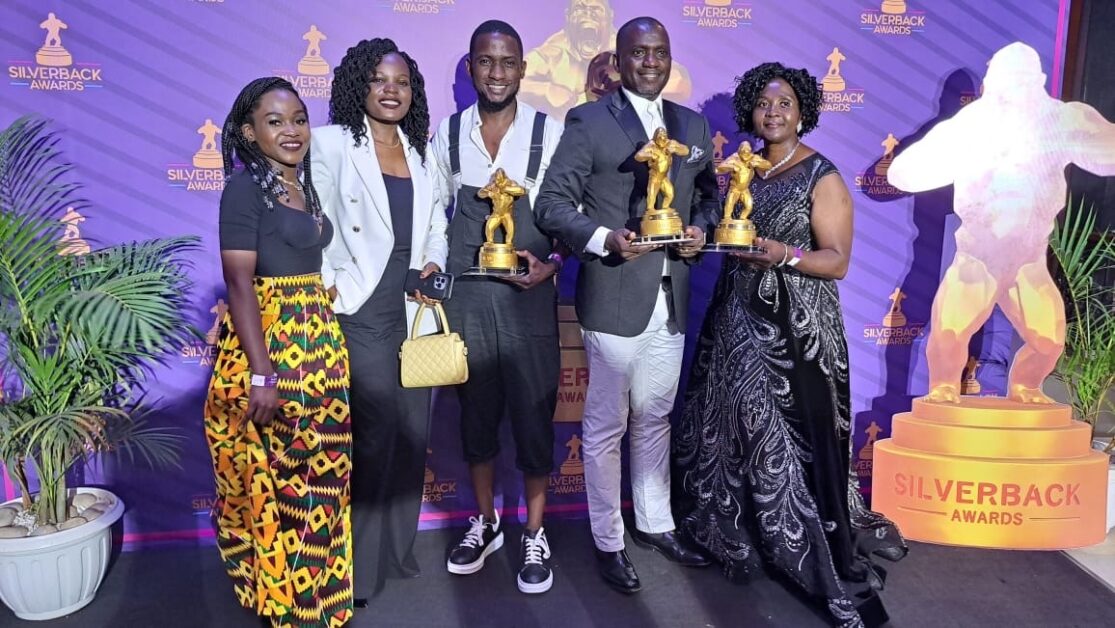
We even went online to see how much it would cost to replace, only to discover it was far beyond our means. But to our surprise, the client was incredibly understanding. He forgave us and ordered for a replacement himself. That experience left us with powerful lessons: the value of honesty, humility, and above all, the importance of building relationships with clients rooted in trust rather than fear.
Another key lesson came from leading people. Early on, I often judged young professionals too quickly. Over time, I learned the importance of being more accommodating, giving space for growth, and allowing people to experiment, stumble, and learn. I’ve shifted my focus toward nurturing people’s strengths and giving them room to shine, instead of micromanaging their weaknesses.
Finally, I’ve also seen firsthand how diversity fuels creativity and growth. You can’t build a strong, innovative team with people who all think the same way or come from identical backgrounds. Diversity of perspectives, experiences, and skill sets has always given us a richer palette of ideas to work with, which is essential in a business like ours.
Earlier, you mentioned how glamorous the industry felt back then, especially with the retainers and how agencies were operating. Would you say the margins were juicier in those days compared to today? And looking at the industry over time, how have the trends in retainers and the overall commercial viability of agencies evolved?
Let me tell you something—the retainers back then were really big. Agencies operated like one-stop centers. A client would walk in and get everything under one roof—strategy, media buying, production, PR, events—you name it. That model meant agencies commanded strong retainers and margins because you controlled the full communication value chain.
Today, that model is almost extinct. Clients have slashed budgets and now prefer a best-in-class approach. They handpick specialized partners: one agency for digital, another for PR, another for creative. It’s now rare to find a single agency managing every aspect of a client’s communications. Naturally, that fragmentation has drastically reduced retainers and overall revenues.
We’ve also seen the rise of niche agencies, especially in areas like digital, PR, which has made the industry more diverse but also much more competitive. On top of that, many clients are internalizing creative and marketing services. They recruit talent directly from agencies, build in-house “mini-agencies,” and take away work that used to sit with us. The rise of direct bookings by clients has further cut into traditional margins.
If you ask any agency founder who was active in the ’90s and early 2000s, they’ll tell you those were the golden years. Advertising was blossoming, and the retainer model was strong. But the landscape has shifted dramatically. For example, in the early 2000s, there was no such thing as a digital department—no digital media managers, community managers, content creators, or influencers. Today, brands live and breathe digital. The market is fragmented, mobile-first, and data-driven. Social media storytelling and digital campaigns are now central, especially for connecting with Uganda’s youth.
So yes, the margins and retainers have declined steadily over the years. The business model has changed, and agencies have had to adapt to survive in this new ecosystem.
Back in the day, when I worked in the advertising industry—for example, at ZK—there seemed to be a more structured process. If a client was briefing a major campaign, it would typically take at least two weeks before the first feedback came through, and the client service team and creatives followed a defined protocol. Today, those processes feel much less rigid. How have agency–client processes evolved over time at Maad?
And looking at the industry more broadly—not just your clients but also peers, competitors and collaborators—there’s a striking paradox. Many of the big brands you work with have grown their profitability twentyfold over the past decade or so, yet agency retainers and margins keep shrinking. Globally, client–agency relationships often seem more structured and respectful, while here in Uganda, agencies are sometimes treated more as vendors than true partners. In fact, I recall from my own agency days in the 2000s that some clients, especially in marketing and communications, could be openly disrespectful, with little sense of mutual value. With that in mind: if you were to advise clients on how to become better partners—so they can actually unlock more creativity and value from their agencies—what would you tell them? What should clients start doing differently to get the best out of agencies?
It has actually become tougher. Clients today will not tolerate the old processes. If you tell a client you need a month, they will quickly find an alternative—because there are plenty. They have boutique agencies, freelancers, and even internal teams they can fall back on. And while in-house teams may not always deliver the same depth, clients increasingly rely on them.
The truth is, in Uganda we also struggle with a culture of last-minute planning. Clients often sit on briefs or product launches for months, only to come to us two or three weeks before they want to go live. That puts enormous pressure on agencies to deliver complex campaigns in impossible timelines. We try to adapt, but it’s not easy. This dynamic also complicates our collaboration with global partners like McCann. They operate with well-structured timelines, rigorous planning, and high standards, whereas here, we are constantly working under pressure. Balancing those two worlds is a delicate act.
Time is the biggest challenge. Internationally, briefs are planned months in advance, leaving space for deep research, strategy, ideation, and testing. Here, it’s common to be asked to deliver in one week what should realistically take a month. The result is that sometimes quality suffers—not because agencies lack ability, but because the environment doesn’t allow the best process.
Budgets are the second challenge. Global-standard work requires investment—in talent, tools, production, and media—but many local clients operate with limited resources. That forces agencies to cut corners or settle for less impactful executions. That said, we cannot afford to make excuses. Agencies must find solutions, and over the years we have learned to adapt, to deliver strong work within these constraints, while also encouraging clients to see creativity as a serious business driver worth investing in.
If I were to advise clients on how to get more value from agencies, I’d emphasize three things.
First, see the relationship as a partnership—not a mere transaction. It’s not like walking to an ATM, withdrawing money, and expecting results instantly. The best outcomes come when clients see agencies as an extension of their marketing departments, working side by side with mutual respect. A partnership is very different from a one-off transaction—you approach it with patience, trust, and collaboration.
Second, give agencies the time they need. Too often, clients sit on briefs for months in their own departments, and then expect an agency to turn around a year-long campaign in two weeks. That doesn’t give space for proper thinking, strategy, and creativity. And remember, Uganda no longer works in isolation. Campaigns here are compared with those in other markets, they compete in awards, and they are visible globally. Rushed work may be “good enough” locally, but on the international stage it often looks average.
Third, invest in exposure and benchmarking. One of the reasons good work sometimes doesn’t run is because marketing teams sometimes lack the exposure to recognize or appreciate its value. I’ve seen outstanding campaigns get shelved simply because someone in the client’s department didn’t like them personally, not because they were ineffective. Benchmarking—attending global awards, subscribing to international platforms, engaging in continuous learning—can help clients appreciate global standards and make more objective decisions.
One other critical issue is the matter of clients paying for pitches. Agencies invest significant time, money, and resources into these processes, only to walk away empty-handed when we don’t win. This is a conversation clients need to hear—because the value we bring starts long before the first campaign ever goes live.
If clients approach agencies as partners, respect timelines, and embrace continuous learning and benchmarking, they will get far more value. And in turn, agencies will be able to produce the kind of work that truly moves the needle for their brands.
Could part of the challenge be the absence of a structured advertising industry—especially at the entry level? Having been both a beneficiary and a victim of this unstructured system, do you feel it’s now your responsibility—and that of your peers—to fix it for the next generation? And through bodies like UAA, UMS, or PRAU, what real steps are being taken to close these gaps and build a stronger industry foundation?
One of the ways we’ve tried to address these challenges is by raising them with umbrella bodies like the Uganda Advertising Association (UAA), the Uganda Marketers Society (UMS), and PRAU. They usually listen, but the real challenge lies in implementation. Some issues are simply too sensitive, while others require time and deeper collaboration, especially when you’re dealing with very large companies—some of the top taxpayers in Uganda—with rigid internal structures. As agencies, our influence is limited. We can highlight the issues, but beyond that, we often find the discussions remain superficial—people tick the box and move on.
This isn’t the case in other markets, where recruitment is more rigorous and people bring strong professional backgrounds into these roles. In Uganda, employment policies vary widely, and sometimes people without the right experience are placed in critical positions. Agencies end up suffering the consequences. I’ve seen campaigns where billions of shillings were invested, yet they were destined to fail—wrong media, wrong targeting, wrong timing. But as an agency, you often can’t stop it; you’re just expected to quietly manage your small retainer and move on.
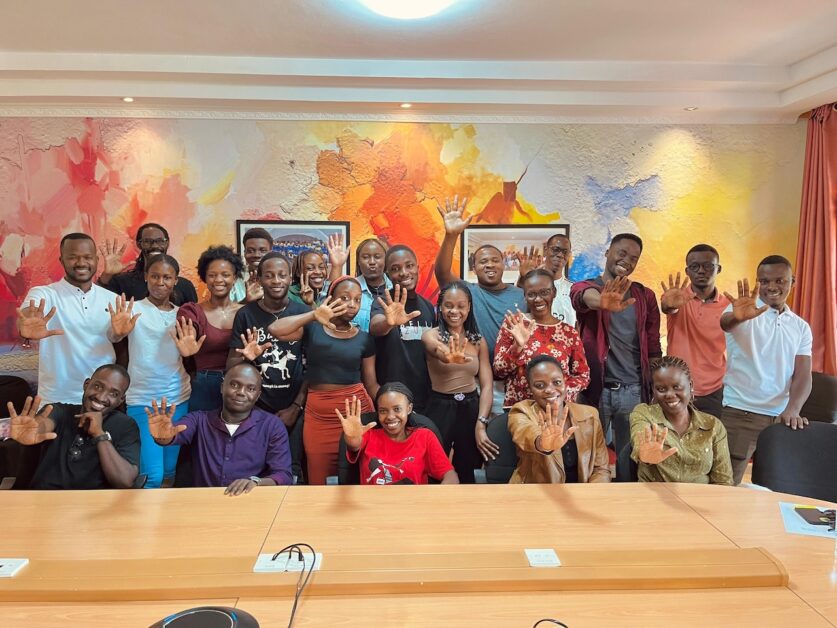
That’s why training has to be two-pronged. Agencies must invest in building talent, but clients also need to train their teams and, importantly, learn to listen. The relationship shouldn’t be patronizing—“I’m the boss, I pay, so I decide.” Instead, there needs to be a balance where both sides build each other’s capacity and move the industry forward together.
I also believe HR has to be part of this conversation, since they are the ones recruiting and interviewing people who end up in these roles. Beyond that, bodies like UMS could introduce short courses, perhaps in collaboration with institutions like the Uganda Management Institute, to give people practical exposure and bridge some of the gaps. Not everyone has a marketing degree, and in today’s economy, many of the people making money don’t come through traditional academic pathways—they’re digitally savvy, but often lack structured training in storytelling, brand building, and strategy.
Do you think part of the problem comes from a failure to adopt research-based insights in decision-making? Because if more of these choices were grounded in proper research, wouldn’t we likely see better-informed and more effective outcomes?
The best way forward is to embrace data-driven insights in decision-making—that’s absolutely crucial, especially with the technology we have today. Unfortunately, many people still rely on gut feeling and ignore the data. Others simply don’t budget for it; they see research on brand health, consumer behavior, or perception as too expensive, so they avoid it altogether.
I strongly believe in data-driven decisions, but the reality is we’re often limited. If a client gives you just a week or two to deliver a campaign, there’s hardly any room to conduct proper research or pretest ideas. So, it becomes about rushing and guessing rather than grounding work in insights. This is a mindset issue, and as an industry we need an honest conversation around it—through platforms like UMS or UAA—and then commit to actually implementing change.
Having been a creative leader before taking on broader industry leadership, and in your conversations with peers, how do you see the talent pool evolving? Comparing those who joined the industry in the late 2010s to those entering now, have you noticed shifts in skills, passion, or attitude—are today’s recruits as hungry and eager to learn as those before them, or has that changed?
When we were starting out around 2010, the people we recruited were fresh from school but extremely hungry to learn. They came in with the right attitude—eager, patient, and willing to grow. That made a big difference.
Today, especially with Gen Z talent, the dynamic has shifted. Many come in with a sense of impatience and entitlement. They expect quick rewards—big salaries within months—without first putting in the time to grow. The “get-rich-quick” mentality has replaced the resilience we saw in earlier years.
Of course, the talent is there. Uganda has brilliant young creatives—just look at how imaginative they are on TikTok, Instagram, and other platforms. But there’s a gap: translating that raw creativity into structured storytelling, brand strategy, and commercial value. That takes time, discipline, and mentorship, and too many are unwilling to invest in that process.
Another challenge is exposure. Many graduates haven’t been exposed to the standards, pace, and processes of a professional agency. They need structured training, mentorship, and opportunities to engage with regional and global work. Some are willing, but many are impatient, preferring instant gratification over long-term growth.
Having worked with several generations of creatives, I can say the crop of 2010 was very different from today’s. Their environment shaped them to be tougher, more resilient. Today’s recruits are shaped by technology, different aspirations, and shorter attention spans. They’re talented, yes, but also want constant validation and comfort. It’s a different era, and as leaders we have to keep finding ways to bridge that gap.
Back then, it wasn’t unusual to occasionally spend a night in the office working on a pitch or a big campaign, without much complaint, because that was the nature of the industry. Today, though, most people expect a strict eight-to-five routine. As a leader who has experienced both worlds, how do you balance these shifts, and what philosophies guide you in managing, grooming, and retaining talent across such different mindsets?
It’s really about balance. We have a diverse team, and you can’t expect everyone to operate the same way. Sometimes the job demands that we burn the midnight oil, and I usually tell the team, “let’s die a little and get this out.” There are those who will gladly turn up on a Saturday or Sunday to get things done, and others who won’t — so as a leader, you learn to balance by knowing which team to assign to what.
At the end of the day, our industry is like a fire brigade — anything can happen at any time. A crisis can break out, and suddenly the client needs a social media banner or campaign live immediately. That requires agility and flexibility to deliver, because clients pay the bills. But it also takes strong management: motivating the team, supporting them when they have to stretch — whether that means buying food, covering extra transport, or simply being there with them. That balance is what keeps both clients and teams satisfied.
One of the things that used to give me the deepest satisfaction was driving through town and seeing a logo, a campaign, or a brand I had contributed to — or watching someone I recruited and mentored rise to greater heights. For you, when you look back at the fire, passion, and vision that drove you when you were starting out, and then consider the impact Maad Advertising has had — not just for shareholders or clients but across the industry — how would you describe your overall impact compared to the vision you set out to achieve?
At Maad, nothing gives us more joy than seeing people who passed through our doors go on to succeed. But let me start with the work itself. Every time I see a campaign we’ve created out there—whether it’s sparking conversations or driving sales for a client—it gives me immense satisfaction.
That said, Maad has always been about more than just building campaigns. We’ve been intentional about building people. For example, we created Iron Sharpens Iron, a CSR initiative designed to mentor and nurture young and emerging creatives. Through it, we invite students, freelancers, artists, filmmakers, designers, and writers to present their work, which is then reviewed by our team of professionals. They receive constructive feedback, mentorship, and guidance to help refine their skills. We believe the future of this industry lies in the hands of the next generation, and it’s our duty to help shape that future.
Beyond that, we live by a philosophy of lifelong learning. At any given time, we host interns across all departments. We embrace the Japanese Kaizen principle of continuous improvement, constantly training and growing talent internally. Some of our best people started out as interns and grew into industry leaders under our roof.
And just as you said, there’s great pride in looking at the industry and seeing how many of today’s leaders once passed through Maad. At one point, you could find a Maad alumnus in almost every top agency in Uganda. Today, they’re not just shaping the industry locally but also making an impact globally.
We’re proud of names like Alemu Emuron, now Chief Creative Officer at The Quollective Africa; Eric Mununuzi, Creative Director at TBWA Uganda; Charity Kamusiime, President of the Uganda Marketers Society and Head of Marketing at dfcu Bank; Maureen Rutabingwa (a.k.a. MoRoots), now Global Innovation Head of Spirits at Diageo Africa; Geoffrey Luyuyo, Media Director at Snack Box Advertising, Hassan Yiga, Head of Creative at Nation Media Group; Job Ahebwa, Co-founder and Creative Leader at Co-Create Advertising; Rhoda Musiima, a digital business growth consultant; and Adonia Waibale, Creative Director at Fireworks Advertising and many others.
Some of these people have gone on to roles even bigger than Maad—we couldn’t afford them back today if we tried—and that makes us proud. Because for us, it’s not just about the work we do now, but also the legacy of talent and impact we leave on the industry.
Let’s talk about your global affiliation with McCann. Could you take us through the journey of how that partnership came about, and some of the experiences and lessons you’ve drawn from working with such a global network? Related to that, how does working on global campaigns and with international partners compare to working with local clients? And what key insights or lessons do you think the industry here can take from your experience, especially when it comes to managing expectations and delivering at a global standard?
We affiliated with McCann Worldgroup, a leading global advertising network, because we knew from the start that to thrive in such a dynamic industry, we had to evolve. After seven years of operation, in 2015 under the leadership of Stella Mpora as MD, we proudly became Maad McCann. That move positioned us as a truly “glocal” agency — combining global thinking with deeply localized solutions.
Being part of a global network has been both a privilege and a huge learning journey. One of the biggest lessons is the value of structure and systems. McCann operates with clearly defined global standards — no compromises whether it’s in the creative process, strategic thinking, or client management. That structure brings discipline, consistency, and professionalism.
We’ve also benefited immensely from capacity building — access to world-class training, tools, and thought leadership that sharpen our people and our product. Their support is always close by, whether it’s resources for a pitch, learning platforms for our teams, or even shared clients that come through the network. At the same time, the affiliation challenges us to constantly raise the bar. Every year we go through due diligence to prove we’re keeping pace with global standards, and that constant pressure has made us stronger and more future-ready.
Ultimately, the biggest takeaway is that you can remain proudly local while operating at a world-class level. When you combine the two, the work truly stands out.
Let’s talk about some of your proudest moments. You’ve had quite a journey, and most recently you literally swept the awards — leaving very little for anyone else. Looking back, what moments stand out for you as the highlights of this tough journey?
It has been a tough journey, but also deeply rewarding. The awards we’ve won certainly make me smile — not just for myself, but especially for my team. They give people confidence that they can be better, and at the same time fuel a hunger to push even further. It’s a bit like football — once you’ve reached the Champions League quarterfinals, you want to get to the semis, and then ultimately win it. That winning spirit inspires growth.
But beyond the trophies, my proudest moments are seeing how far Uganda’s advertising industry has come and knowing that Maad has played a part in that journey. Over the last 17 years, we haven’t just built campaigns; we’ve built careers, livelihoods, and a creative community. Nothing gives me greater joy than seeing people we mentored rise to leadership roles or shine on both local and global stages. That’s when you know your contribution went beyond business — it touched lives and helped shape the creative economy.
For me, leadership is really about the three Ps: Profit, People, and Planet. Profit matters because we’re in business. Planet is critical because we must be sustainable. But it’s people — our staff, our clients, and the broader community — that sit closest to my heart. Watching them succeed and thrive has been, without question, my biggest source of pride.
I was speaking to a creative leader recently, and they mentioned using what they call the three F’s when evaluating clients: Fame — will the work give us visibility and recognition? Friendly — is the relationship mutually respectful? And Financial — is the account commercially worthwhile? At Maad, do you have a similar framework or checklist that guides you on which pitches to pursue, which clients to let go of, or which ones to double down on? And how has that shaped the kind of clients you’ve retained or attracted over the years?
Yes, we do have an internal framework we follow, though it’s a bit different from the three F’s. Ours is more practical, and we call them our guiding pillars—almost like our fundamentals that keep us focused. The reality in this industry is that you can’t always afford to be overly picky, otherwise you risk closing shop. So, we balance ambition with pragmatism.
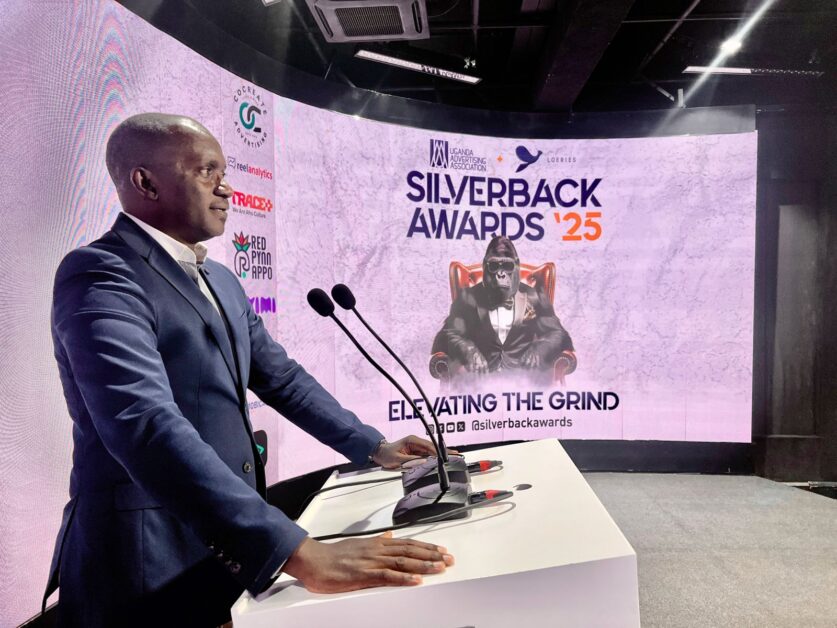
Our evaluation usually comes down to four main considerations. First, the financials: does the account make sense commercially? Second, legality: is the product or service something legitimate and ethical? For instance, we wouldn’t work with someone selling guns or anything illegal. Third, scope of work: does the assignment align with our capacity, and does it translate into meaningful impact for both us and the client? Lastly, due diligence: we always take time to assess whether the client relationship will be sustainable and manageable.
So while we may not use the “fame–friendly–financial” lens as others do, our process is built around ensuring that the work is profitable, legal, practical, and impactful. At the end of the day, the client must value our communication and, importantly, must pay us fairly and on time.
There’s a common saying that most startups in Uganda rarely make it past their second birthday. Yet here you are, more than 15 years later, still standing strong. Part of that longevity has come from how you and your co-founders have managed to rotate roles and keep the partnership going. What are some of the key lessons you’ve learned about building partnerships that last?
One of the biggest lessons I’ve learned about building partnerships that last is the importance of emotional intelligence. You have to first understand yourself, then understand the people you’re working with—their strengths, weaknesses, and behaviors—so you know how to relate with them and where the boundaries lie.
At the heart of it all is trust and mutual respect. Trust means openness—access to information, accountability, and honesty with each other. Respect doesn’t mean bowing or kneeling, but a natural recognition of each other’s value. Once that is in place, it becomes easier to work together.
Partnerships also thrive on systems and processes. Clear structures create transparency, make collaboration easier, and ensure everyone can access and use information appropriately. Without that, things quickly become chaotic.
Another key factor is compatibility. Just like in personal relationships, not everyone is built to work together. Some people simply can’t work in teams. If you’re going into a partnership, you have to be ready to share credit—you can’t be the prima donna, the alpha and omega of everything. You must also be willing to stay curious and keep learning. No matter your qualifications or past achievements, you can’t act like you know it all; partnership is a two-way street.
Finally, partnerships require consensus on critical issues, especially around money. Different personalities handle finances differently—some want to spend, some want to reinvest. Those differences can cause friction if not managed well. But if you sit together, openly discuss, and agree on the key decisions, you create alignment. That combination of trust, respect, structure, compatibility, and shared responsibility is what has kept us going all these years.
A senior lawyer once told me that most partnerships work well when the money is still small, but the moment the first big cheque comes in, that’s when cracks appear. Suddenly, everyone has expectations—someone wants to buy a Range Rover, forgetting there’s tax to pay or that it might take two or three years before another big deal comes through. And it’s often at that point that many firms split. From your own experience, how have you and your partners navigated those moments of financial pressure and expectation?
Exactly. That’s why I keep stressing trust, mutual respect, and consensus. The moment greed sets in—when someone wants to take the lion’s share—things fall apart quickly. If you can’t reason with both your head and your heart, and instead let emotions drive decisions, it’s very hard to sustain a partnership. It really comes down to discipline, fairness, and keeping the bigger picture in mind.
Winning a big account is one thing, but servicing it is a whole different challenge. From your experience—like when you landed Warid—what were the toughest lessons in managing those “big game” deals, where the real work begins after the win?
Because we had worked in other agencies before starting Maad, we carried valuable lessons that shaped how we run our business. We always knew we were fragile—one financial mistake could sink us—so we became extremely disciplined. Take the common “kwozaamu” habit, where agencies divert supplier money for other uses: at Maad, that’s a red line. The moment a client pays us, we immediately start processing supplier payments. It may take a few days because of internal systems, but we make sure they’re settled promptly and professionally.
Why? Because Kampala is small. Miss one payment, and by evening it’s on WhatsApp groups and social media, with your reputation shredded. We couldn’t afford that. So we built a culture of strict financial discipline—pay suppliers on time, stay compliant with statutory obligations, and follow internal controls. In this business, the moment you start “playing” with money is the beginning of your downfall. Discipline is what has kept us standing.
In this fast and often chaotic world, do you ever stop to think about the legacy you’d like to leave behind as Adris? And when the time comes for you to retire and perhaps spend more time on the golf course, how would you want to be remembered?
I’d like to be remembered as someone who came into this industry and worked to change it for the better. That I left behind a sense that the world we live in, and the people in it, are better than I found them. And above all, that I championed sustainability and helped make the world a better place for posterity.
Looking ahead, what are your thoughts on the future of advertising—especially with the rise of new technologies like AI and the wave of digital creativity it brings? Alongside these opportunities, how do you see the challenges of ethics, integrity, and the pressure for instant results affecting agency-client trust and the values that shape the industry?
From where I sit, the future of advertising in Uganda will be driven by technology but sustained by trust and creativity. Tools like AI are already reshaping how we create, analyze, and deliver content—but they are just enablers. What truly matters is how responsibly and authentically we use them.
Ethical considerations—data privacy, truth in advertising, and AI transparency—will become even more critical. As media channels multiply, client–agency trust must shift from transactional vendor relationships to genuine partnerships built on respect, shared goals, and long-term thinking.
Creativity will remain the key differentiator, but it must be powered by insights, data, and a deep understanding of evolving consumer behavior. At the same time, I believe policymakers—from Parliament to regulators like UCC—must step in with frameworks to guide the responsible use of new technologies. We’re already seeing deepfakes and manipulated content, and without clear policies on data protection and digital ethics, the risks will only grow.
So yes, technology will transform our industry, but trust, creativity, and a strong ethical framework will sustain it.

As a leader, you now have the liberty to sometimes choose when or how to work—but we all know there are days you’d rather switch off. Yet, you still find yourself waking up at 3am, pushing beyond comfort. What is it that drives you—creatively, professionally, and as a leader?
If I go back to what I said earlier, passion has always been at the heart of everything I do. It’s not just ambition—I’m drawn to things with soul, depth, and meaning. That’s why music has always inspired me. I grew up on Marvin Gaye, Sade, George Benson, Whitney Houston, Luther Vandross, Babyface, Bob Marley… artists who poured truth into every note.
That same authentic, timeless energy is what I try to bring into every campaign or project—we must connect with people. Even when we lose a pitch and get that “we regret to inform you” email, yes, it stings for a few minutes, maybe an hour or two. But by the next day, I’m fired up again, ready to attack something else.
So for me, passion is the big driver. It keeps me going, even at my lowest moments, and it’s what has carried me throughout my journey in this industry.
I hear you on passion. But when the pressure gets too high—and everyone is looking up to you as a leader—what are some of the survival tricks you’ve developed to cope and keep going?
Over the years, I’ve developed certain habits that keep me grounded. First, I prioritize rest—I don’t sleep late, because I learned long ago that lack of sleep eventually catches up with your mental health. I also exercise at least twice a week, and when I need to recharge, I’ll watch a good movie, a football game, or simply spend time with family and friends.
Music is another big therapy for me—not the everyday radio tunes, but the kind of music that soothes my mind and helps me reset. And then there’s a ritual I truly treasure: every evening when I get home, I spend 40 minutes to an hour completely alone. No distractions, just sitting quietly to reflect, defragment, and reorganize myself. Everyone at home knows this is my time. That daily practice gives me peace and helps me stay clear-headed despite the pressure.
You’ve mentioned music as a big source of inspiration for you. Beyond that, are there any books or particular people who have shaped your worldview and influenced how you lead and create?
Music has shaped me more than any other art form. I grew up on soul, R&B, and soft rock—Rod Stewart, Elton John, Sade, Lionel Richie, Tracy Chapman, Luther Vandross, Carlos Santana, Baby Face and others. Their music wasn’t just entertainment; it carried identity, resilience, and truth. That’s where I first learned emotional intelligence, long before I had the language for it.
Of course, I also read—books like The Alchemist and Outliers have shaped my perspective on purpose, mastery, and leadership. These days I gravitate toward management and leadership books—how to manage people, businesses, and stakeholders. But when I need real inspiration or even stress relief, I always return to music. Jazz calms me, soul music re-centers me, and the craftsmanship of legends like Prince or Phil Collins reminds me of what true artistry and authenticity mean. In many ways, those voices have been my mentors.
Looking back at your 20-year professional journey—if it were a creative canvas or reel on your screen, and you had the chance to edit it—what would you change or tweak? Are there moments you would delete or redo, or are you content to leave it as it is, flaws and all?
If there’s one thing I’d go back and do differently, it would be to study people more deeply. Human behavior is complex—it keeps changing, and just when you think you’ve figured someone out, they surprise you. I wish I had invested earlier in understanding life and human dynamics better. Beyond that, I’m largely content with the script of my journey. But if I could tweak anything, it would be to learn more about people—their behaviors, strengths, and complexities.
Is there anything we haven’t touched on in this conversation—something you’re particularly passionate about or feel should be highlighted—that my questions didn’t bring out?
I think what I really wanted to bring out—and I saw it hinted at in your questions—is how Maad has been driving professional creativity and raising agency standards in Uganda’s advertising industry. From the start, Maad positioned itself as a pacesetter, championing not just creative excellence, but also elevating professionalism and agency operations in very deliberate ways.
First, we raised the bar on creativity. Over the years, we’ve delivered bold, culturally resonant, insight-driven campaigns that not only won consumer love but also earned recognition at regional awards. Our work goes beyond advertising—it has become part of culture. From concept to execution, we bring world-class storytelling into the local context.
Second, we focused on professionalizing the industry. We invested in systems, processes, and talent development that mirror global agency standards—everything from onboarding to reporting timelines and financial transparency. The result is an agency that clients can trust and creatives are proud to work with.
Third, we pioneered integrated thinking. At Maad, strategy, digital, creative, PR and production work seamlessly under one roof. That integrated model set us apart early on and remains a strength today.
Fourth, we’ve been deeply committed to talent development. Many of the industry’s top creatives and marketing leaders started with us. We take pride in being a training ground for the next generation of professionals in Uganda and across the region.
Finally, we continue to contribute to industry growth. Through leadership in industry associations, partnerships with universities, and participation in regional and global awards, Maad has consistently championed Uganda’s advertising industry on bigger stages. We are active members of bodies like UAA and PRAU, ensuring our voice is part of shaping industry standards.
Share this content:
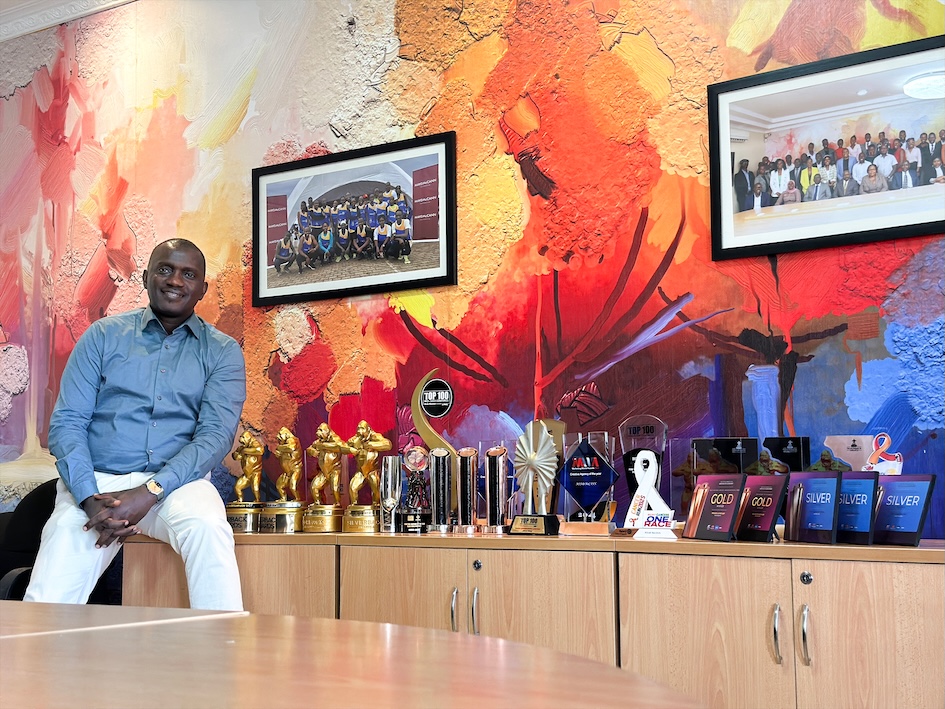
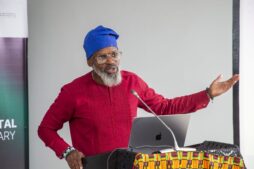 John Kamara: The Man Betting Africa’s Future on Artificial Intelligence
John Kamara: The Man Betting Africa’s Future on Artificial Intelligence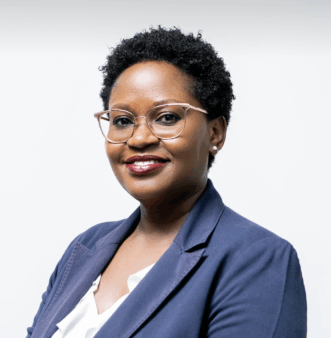

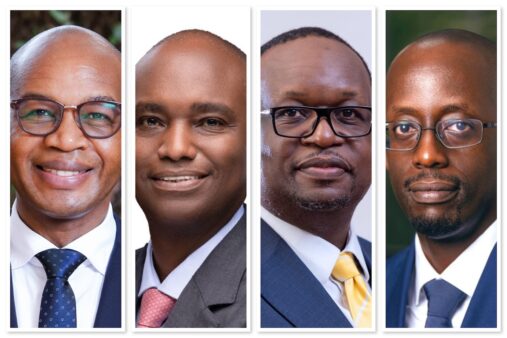
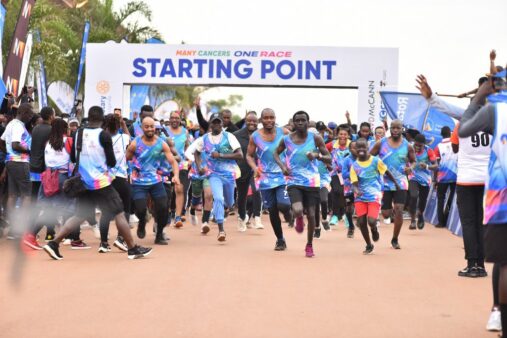
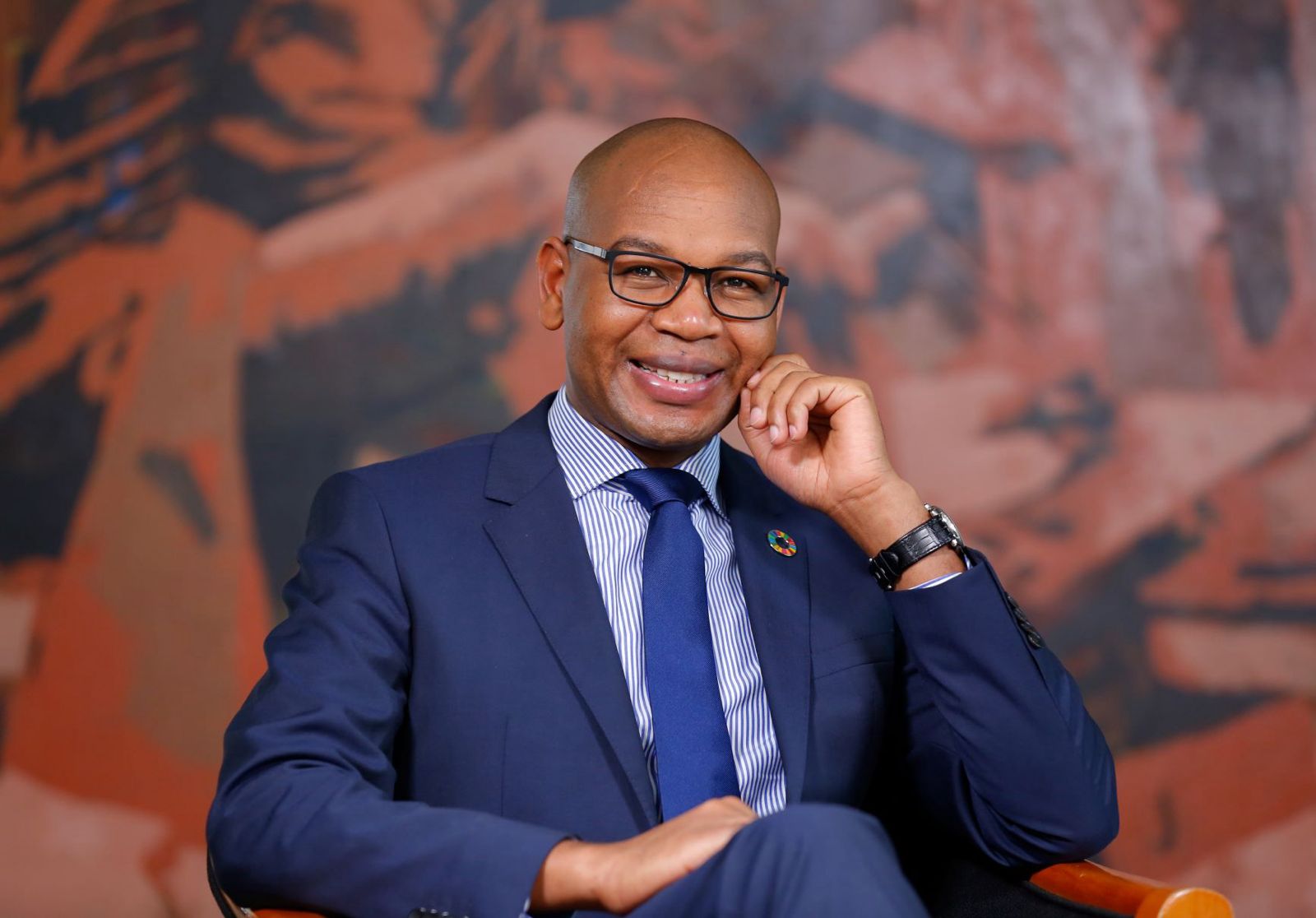
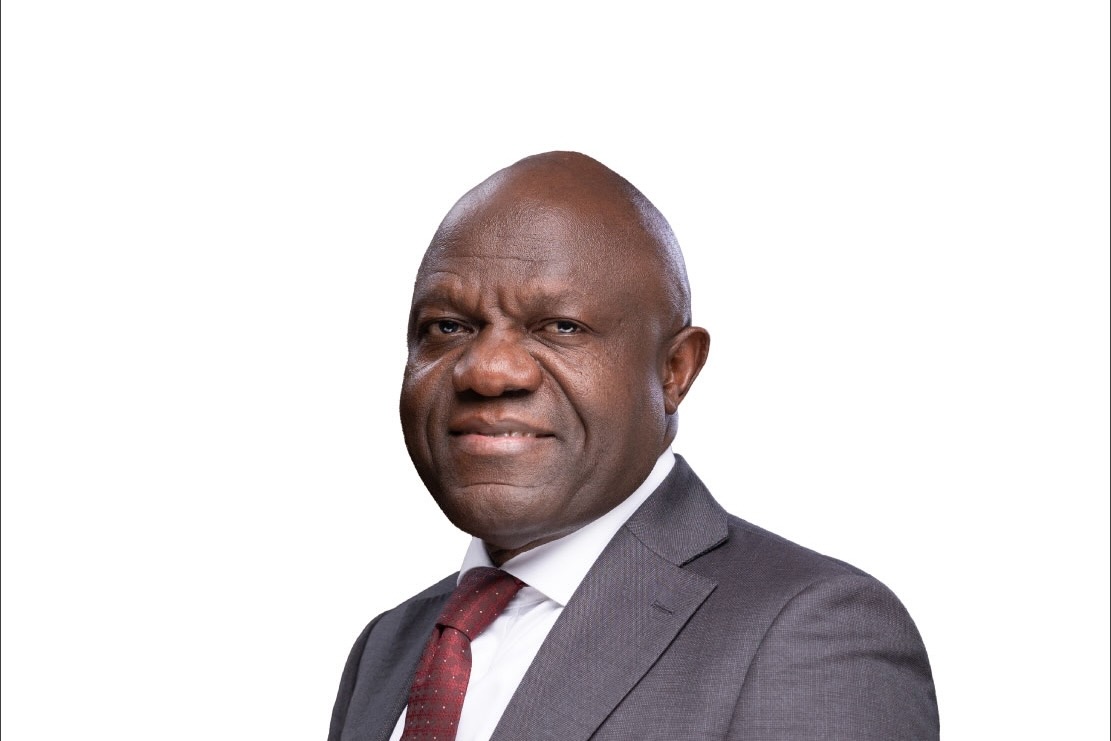
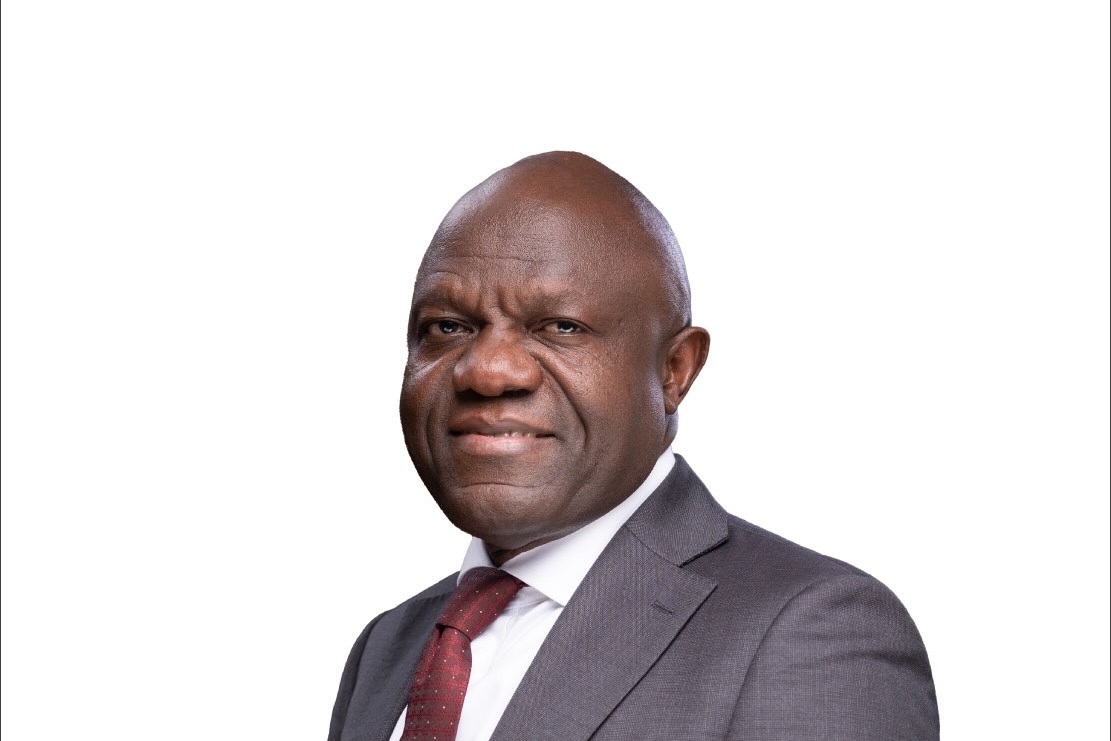

Post Comment